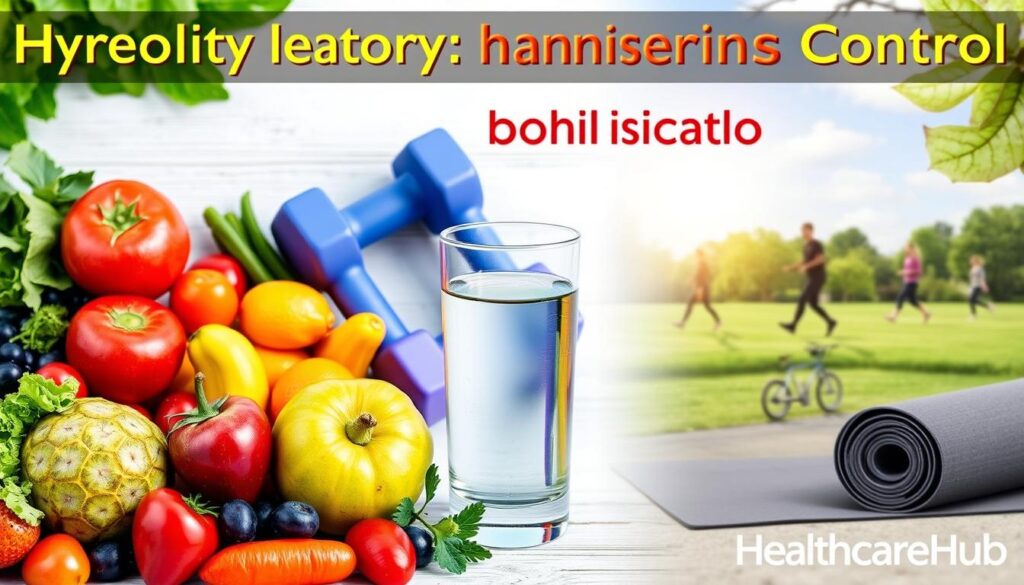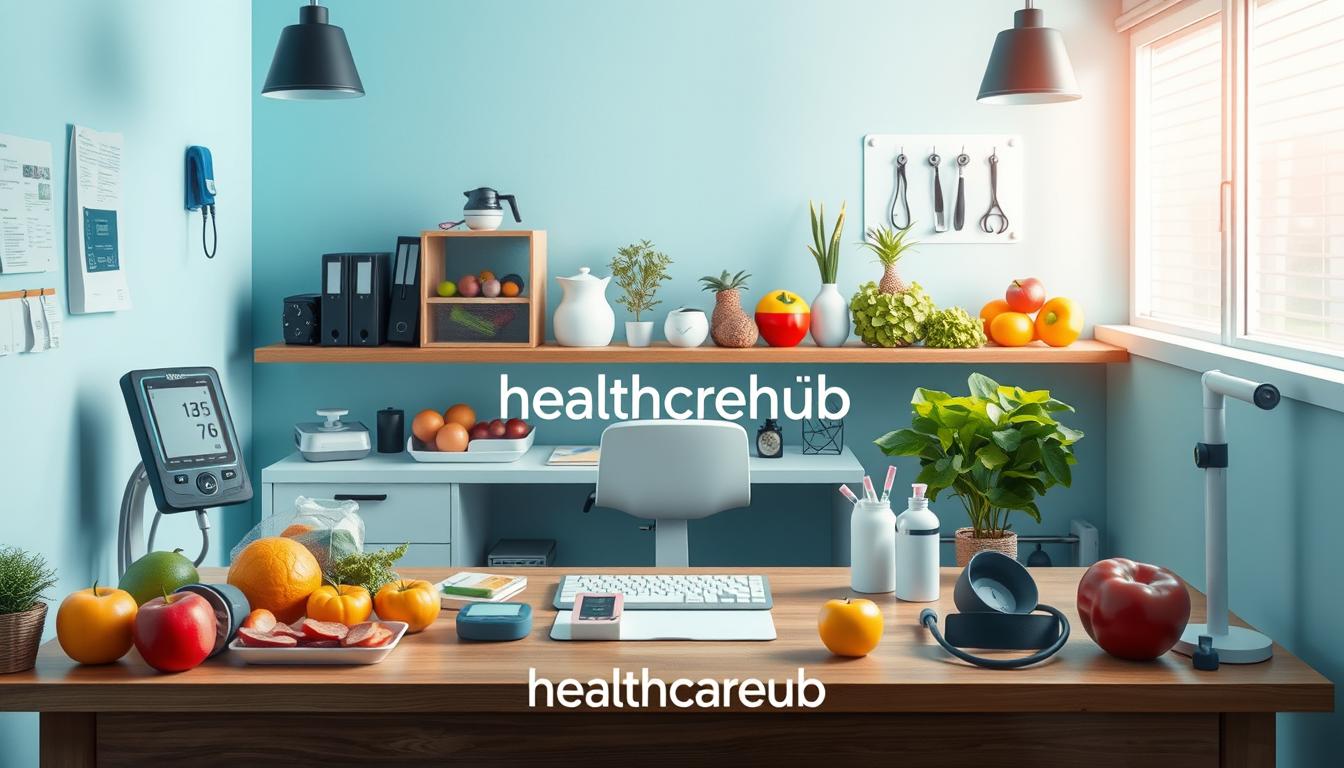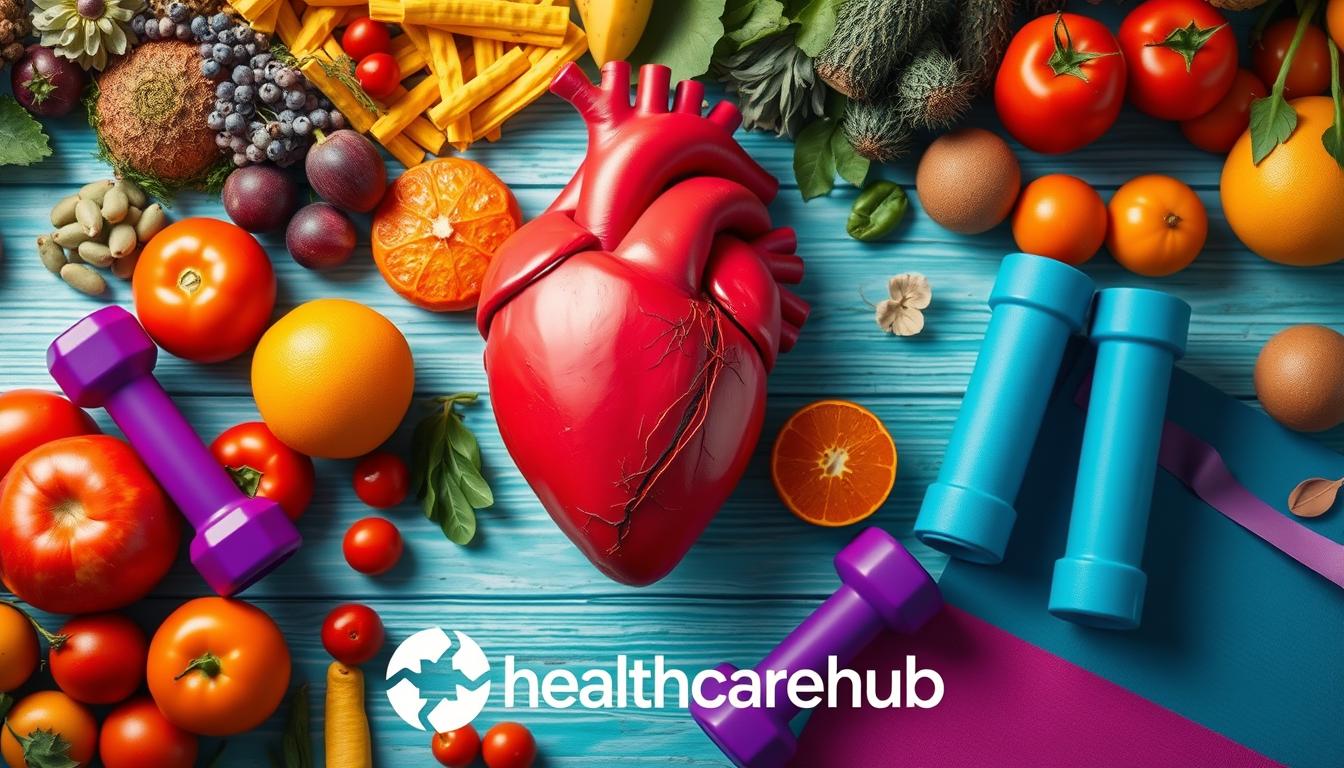High blood pressure, or hypertension, is a silent killer affecting nearly half of American adults. It can lead to serious health problems like heart attack, stroke, and kidney disease. Early diagnosis and lifestyle changes are crucial for managing hypertension and reducing the risk of these life-threatening conditions.
Blood pressure is measured as two numbers – systolic (pressure during heartbeat) and diastolic (pressure between beats). Regular blood pressure checks are essential, as hypertension often has no symptoms. Timely diagnosis and proper management through lifestyle modifications and medication, when necessary, can effectively control blood pressure and minimize health risks.
Key Takeaways
- Hypertension is a “silent killer” with few noticeable symptoms
- Lifestyle changes and medication can improve blood pressure control and reduce cardiovascular risks
- Regular blood pressure monitoring is crucial for early detection and management
- Maintaining normal blood pressure helps prevent heart disease, stroke, and other complications
- A long-term commitment to healthy habits is necessary for successful hypertension control
Understanding Blood Pressure Basics and Risk Factors
To manage blood pressure well, knowing the basics is key. Blood pressure is shown in two numbers: systolic (top number) and diastolic (bottom number). The systolic number shows the force in your arteries when your heart beats. The diastolic number shows the force when your heart rests.
A normal blood pressure is less than 120/80 mmHg. This is what health experts aim for.
Many factors can lead to high blood pressure. These include age, race, gender, lifestyle, family history, and medical conditions. For example, certain racial and ethnic groups, like Black, Hispanic, and Asian adults, especially males, face higher risks. Also, most people with diabetes and high cholesterol also have high blood pressure.
Common Risk Factors for Hypertension
- Age: Risk increases with age, especially after 65.
- Race/Ethnicity: Black, Hispanic, and Asian adults are at higher risk.
- Gender: Men are at greater risk than women.
- Lifestyle Habits: Regular heavy alcohol use, smoking, and a sedentary lifestyle.
- Family History: Genetics and shared environmental factors.
- Medical Conditions: Diabetes, obesity, sleep apnea, and kidney disorders.
- Socioeconomic Factors: Income level, job, and education can affect stress levels.
Warning Signs and Symptoms
High blood pressure often has no symptoms. But, in severe cases, people might have headaches, shortness of breath, or nosebleeds. Regular check-ups and timely medical care are vital for managing blood pressure and educating patients.
| Blood Pressure Range | Systolic (mmHg) | Diastolic (mmHg) |
|---|---|---|
| Normal | Less than 120 | Less than 80 |
| Elevated | 120-129 | Less than 80 |
| High Blood Pressure (Hypertension) Stage 1 | 130-139 | 80-89 |
| High Blood Pressure (Hypertension) Stage 2 | 140 or higher | 90 or higher |
| Hypertensive Crisis | Higher than 180 | Higher than 120 |
Lifestyle Modifications for Hypertension Control
Changing your lifestyle is key to managing high blood pressure. The DASH diet, regular exercise, and managing your weight are all important. They can help control your blood pressure.
DASH Diet Implementation
The DASH diet focuses on eating more fruits, vegetables, whole grains, and low-fat dairy. It has been proven to lower blood pressure by 5.5/3.0 mmHg. This diet can also cut down on heart disease by 25%.
Physical Activity Guidelines
Exercise is vital for keeping blood pressure in check. Aim for 30 minutes of moderate activity each day. This can lower blood pressure by 3.84/2.58 mmHg. Cardio exercises are especially beneficial for those with high blood pressure.
Weight Management Strategies
Keeping a healthy weight is crucial for blood pressure. Losing just 5.1 kg can lower blood pressure by 4.44/3.57 mmHg. It’s also important to watch your waist size. Men should aim for under 40 inches, and women for under 35 inches.
| Lifestyle Modification | Blood Pressure Reduction |
|---|---|
| DASH Diet | 5.5/3.0 mmHg |
| Aerobic Exercise | 3.84/2.58 mmHg |
| Weight Reduction (5.1 kg) | 4.44/3.57 mmHg |
By making these lifestyle changes, you can manage your high blood pressure. This includes following the DASH diet and staying active. It can also lower your risk of heart disease.

Dietary Approaches to Lower Blood Pressure
Eating right is key to managing high blood pressure. By cutting down on sodium and boosting potassium, you can lower your blood pressure.
The DASH diet is a well-known plan for blood pressure control. It focuses on whole foods like fruits, veggies, whole grains, and lean proteins. It also limits sodium, saturated fats, and sugars.
Lowering sodium to under 2,300 mg a day, or 1,500 mg, can drop blood pressure by 5 to 6 mm Hg. Boosting potassium to 3,500-5,000 mg daily helps balance sodium’s effects and lowers blood pressure more.
Other diets, like the Mediterranean diet, also help lower blood pressure. It’s full of healthy fats, whole grains, and plant-based foods. Protein from soy and milk can also help lower blood pressure in people with pre-hypertension or stage I hypertension.
Combining these diets with exercise and stress management is a great way to manage high blood pressure. It keeps your heart healthy too.
Success comes from making small, lasting changes in your diet. Read labels, pick low-sodium foods, and cook more at home. This helps you control sodium and improve your blood pressure.
Exercise and Physical Activity Recommendations
Regular physical activity is key to managing high blood pressure and reducing heart disease risk. Many studies show that exercise lowers blood pressure and boosts heart health.
Cardiovascular Exercise Benefits
Aerobic activities like brisk walking, jogging, and cycling can lower blood pressure by 5 to 8 mm Hg. Aim for 30 minutes of moderate activity daily, or 150 minutes weekly. High-intensity interval training is also great for controlling blood pressure.
Strength Training Guidelines
Strength training, done at least twice a week, also helps lower blood pressure. It improves muscle strength and heart fitness, both important for managing high blood pressure.
Safe Exercise Practices for Hypertensive Patients
People with high blood pressure should talk to a doctor before starting to exercise. A healthcare professional can guide on the right intensity, duration, and type of activity. It’s also important to warm up, cool down, and gradually increase exercise to avoid injury and get the most benefits.
| Exercise Type | Recommended Frequency | Key Benefits |
|---|---|---|
| Aerobic Exercise | At least 30 minutes per day, 5-7 days per week | Lowers blood pressure by 5-8 mm Hg |
| Resistance Training | At least 2 days per week | Improves muscle strength and cardiovascular fitness |
| Flexibility Exercises | 2-3 days per week | Enhances mobility and reduces injury risk |
By adding a balanced exercise routine to their lives, people with high blood pressure can manage their condition well. This reduces cardiovascular risk and improves overall health and well-being.

Stress Management and Sleep Quality
Managing stress and getting good sleep are key to controlling high blood pressure. Chronic stress can raise blood pressure, so it’s important to find ways to relax. Enjoying hobbies and practicing mindfulness can help reduce stress.
To manage stress, consider these strategies:
- Plan your day and focus on what you can control, rather than worrying about uncontrollable factors.
- Identify and avoid triggers that heighten your stress levels.
- Make time for relaxation, such as meditation, deep breathing exercises, or engaging in a hobby you find fulfilling.
- Nurture social connections and seek support from family and friends, as strong relationships can be a valuable stress-relieving tool.
Good sleep is also crucial for blood pressure control. Adults should aim for 7-9 hours of sleep per night. A restful sleep environment, a consistent sleep schedule, and avoiding big meals, caffeine, and alcohol before bed can improve sleep.
Poor sleep can lead to health issues, including high blood pressure. Sleeping fewer than 5 hours each night is associated with more than a 2-fold elevation in the risk of developing hypertension. By focusing on stress management and sleep, you can help keep your blood pressure healthy and improve your overall well-being.
Blood Pressure Monitoring and Medical Support
Tracking your blood pressure at home is key to seeing how well lifestyle changes and meds work. You can buy home blood pressure monitors without a doctor’s note. But, it’s important to talk to a healthcare expert about how to use them right to get accurate readings.
Seeing your doctor regularly is vital for managing high blood pressure. If just changing your lifestyle isn’t enough, you might need meds. There are many types of blood pressure medicines, and your doctor will pick the best one for you.
By monitoring your blood pressure at home and working with your doctor, you can manage your high blood pressure better. Regular visits and changes to your treatment plan, if needed, help keep your blood pressure healthy. This can also lower your risk of heart disease caused by high blood pressure.















Leave a Reply